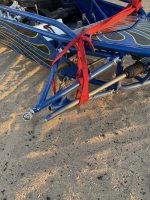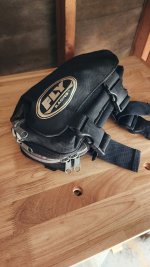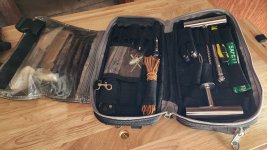This is something I posted in DuneSafe a LONG time ago. I'm just gonna copy and paste it with no edits...
San Diego Off Road is a great magazine! You can find their web-site here:
http://www.sandiegooffroad.com/ They recently featured a great article written by one of the guys at Rescue 3. You can find the their web site here:
http://www.rescuethree.com/index.html DuneSafe felt is would be worth re-printing so we got permission from Kevin Shutt at Rescue 3 to re-print what he wrote. I hope you find it as informative as we did!
Basic survival tools
This month’s Safety Check will list some basic items that should be in every backpack or camelback. We’ve also included a few helpful tips about how to use those items, and a few items that are nice to have with you. Whenever you leave camp for a long ride, or a short one, you should always be prepared to spend a night alone in the desert. Even simple, local events such as poker runs or fun rides can sometimes leave a rider lost or broken down. As the sun goes down and the temperature drops, you could find yourself in real trouble if you’re not prepared.
Every desert rider should carry:
Water - When half of your water is gone, turn around and head back to camp.
Waterproof matches - Know when it's safe to use them, and discuss the same with the kids.
Light stick with a string attached - When you hear a vehicle or a helicopter, activate the stick and swing it in a circle over your head.
Whistle - 3 quick blows on a whistle means you’re in trouble. You can whistle for a lot longer than you can yell, and it will carry much farther.
Space blanket - These come in very small packages and have multiple uses such as a rain guard or a sun shade, in addition to the main function of preventing hypothermia. They are also highly visible in daylight, from the ground and the air. Some blankets have survival tips printed on them.
Signal mirror - But not made of glass. Carry an old CD to use as a signal mirror.
High calorie food - A small bag of nuts, or protein bars. Carry a few of these so you can treat yourself to a snack on a long ride, but remember to replenish your supplies.
Cell phone - Make sure you have a freshly charged battery and the phone numbers of some friends in camp that can help you without launching a full search and rescue.
Items that are nice to have if you’ve got room in your backpack:
GPS - small GPS units are available for around a hundred bucks, and you’ll be glad you have it if you need to call rescuers to a remote area.
Fire Ribbon - check with your local sporting goods store or camping website for a product called fire paste or fire ribbon. It comes in a squeeze tube and holds a flammable paste that provides quick, odorless fire starting without flare-up or splashing. This can really help to get a fire going in the cold, thin air of the desert. Remember that windy conditions are not ideal for safely managing a fire in the high desert.
Jacket - A brightly colored windbreaker can be used for warmth and signaling.
Tools - Carry the tool kit of your choice, and check it frequently as your needs may change. An extra spark plug and wrench, and a CO2 kit to refill tires, are a few simple items that can help others as well. Racers may want to carry a hack saw blade to cut off a flat tire if necessary. These take up very little room in a backpack, and can be used for many things out on the trail.
Bright colors - you may want to save your camouflaged riding gear for the track. In the desert, bright colors and flashing of mirrors or metal in the sun may be your only hope of being seen.
If you want to be seen make yourself visible. Climb to high ground, as near as possible to your bike or quad, and use your tools to help rescuers find you. Pass this information along to friends and riders who may be new to the desert.
The example that you set may save a life someday. 




